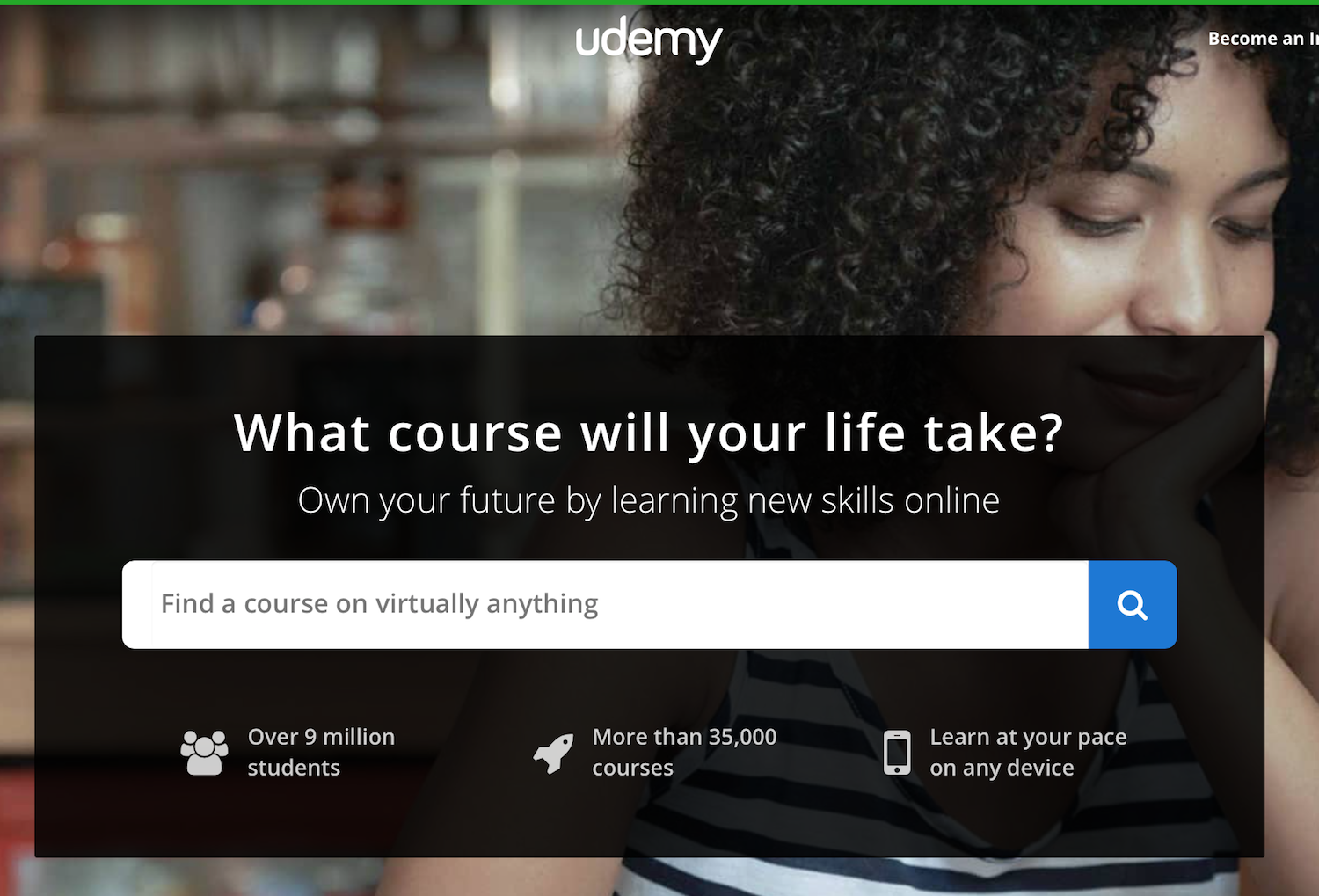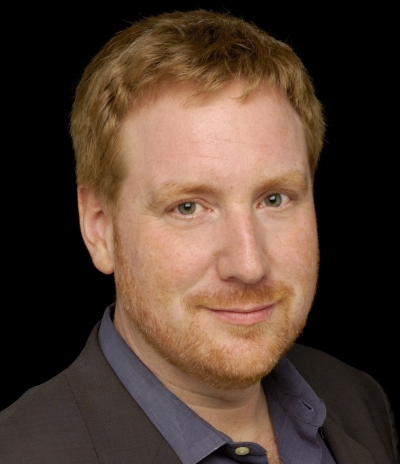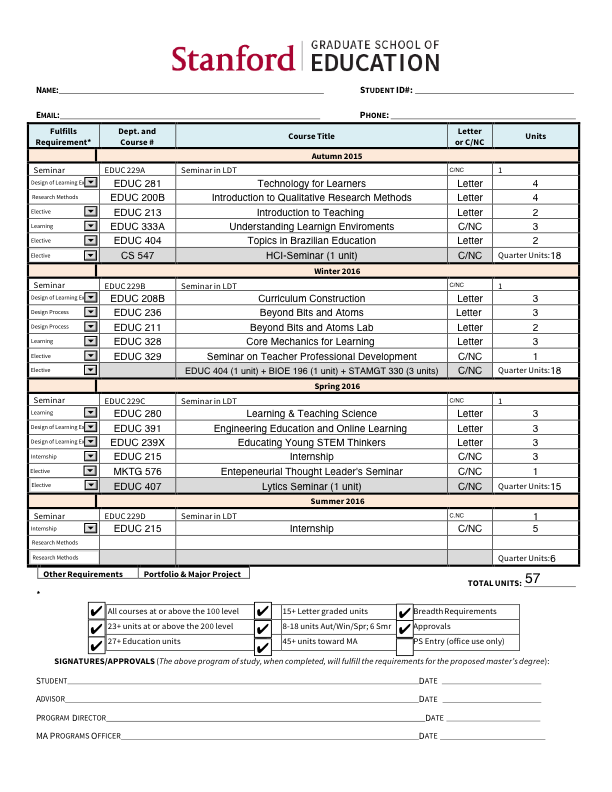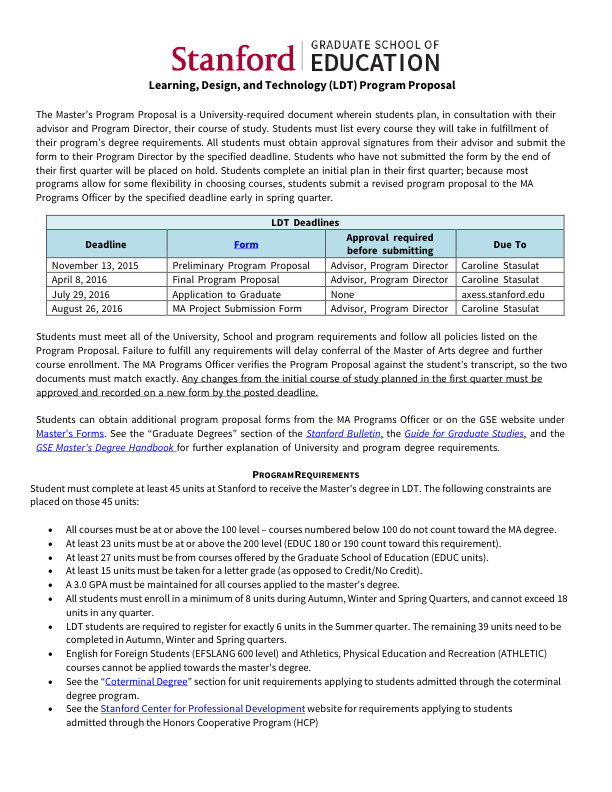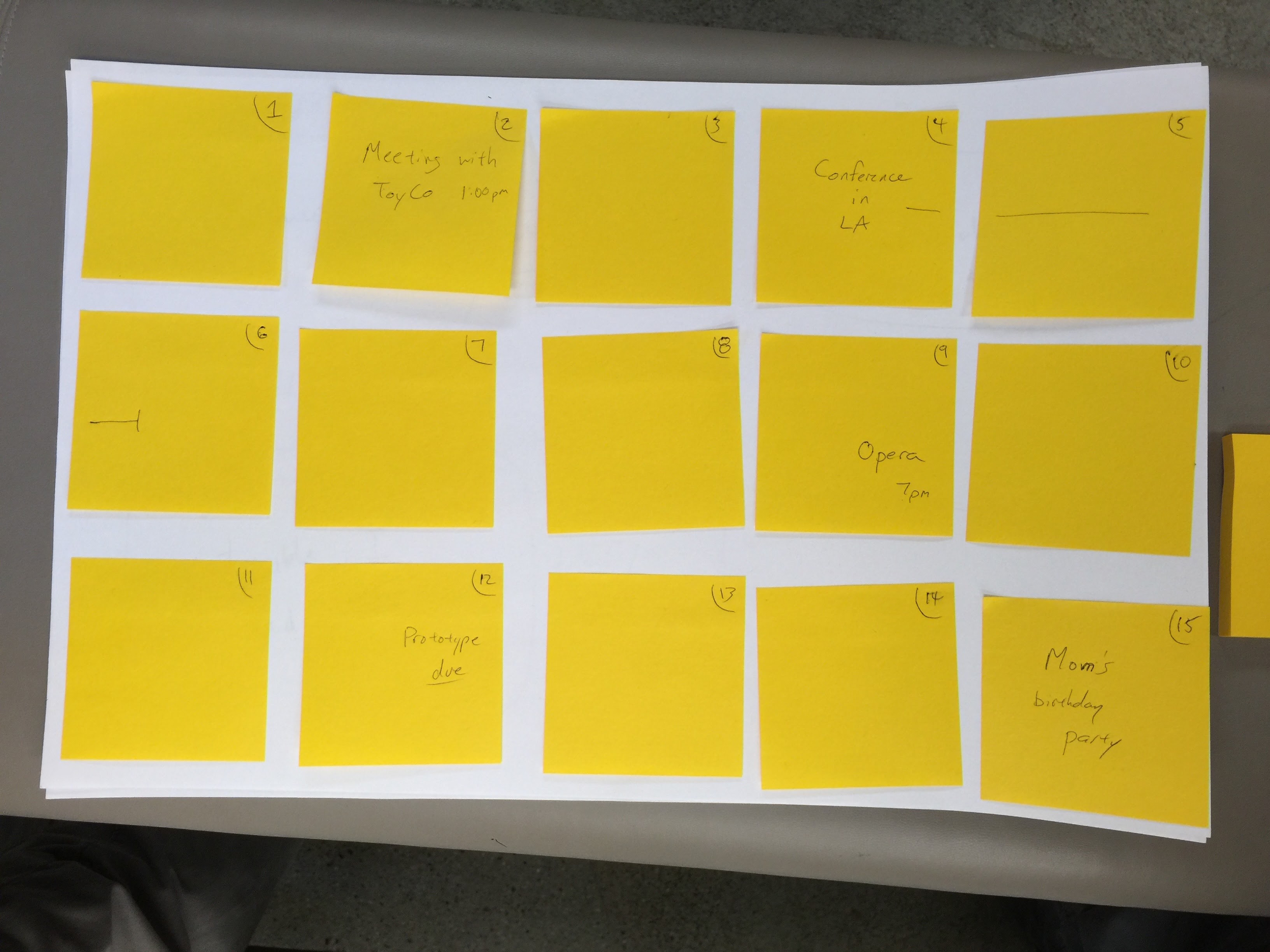Assignment
- Evaluate your own contributions to seminar based on this rubric.
- Explore your own learning inside and outside of class in a brief reflection paper (1-2 pages).
|
Below Expectations |
Meets Expectations |
Exceeds Expectations |
|
|
Attendance* |
Misses two or more seminars. Comes late or leaves early. Does not inform instructor of absence in advance. |
Attends all of seminar, or misses one, with very good excuse (e-mailed to instructor ahead of time). Always on time. |
Organizes extra learning opportunities for other learners. |
|
Assignments** |
Assignments are late, incomplete, or poorly executed. |
Assignments are turned in on time. All outside work is turned in on time (or ahead of time). Assignments address the assignment components, but appear rushed or have errors. |
In-class and out-of-class assignments are completed thoughtfully and thoroughly. In out-of-class work, attention is paid to content, spelling, grammar, and flow. |
|
Participation |
Rarely speaks, or rarely listens. Carries on side conversations or other off- topic activities (for example on the computer). |
Mostly listens, but speaks sometimes. Or mostly speaks, but listens sometimes. |
Speaks and listens actively in class. Builds on the ideas of others. Challenges own thinking and that of others. Seeks to make connections between concepts in class and to outside experiences. |
Response
Self evaluation:
Attendance
Meets Expectations – Attends all of seminar, or misses one, with very good excuse (e-mailed to instructor ahead of time). Always on time.
The reason why I did not evaluate myself as “Exceeds Expectations – Organizes extra learning opportunities for other learners” is because I did not have the time or put in the effort to help my peers. Maybe if I was aware of this evaluation at the beginning of the quarter, I would have attempted to do so. Yet I see that I had the opportunity to teach Reuben some iOS development – which he expressed interest in. I simply did not have the time to do so. I expect that next quarter I might not have the time either but will make an effort to be more aware of these teaching/knowledge sharing opportunities. To counter this argument though, I’ve maintained a blog (www.lucaslongo.com) where I registered all of my reading and class notes as well as all the assignments I created during the quarter. Even though the blog’s main purpose was to document my work and have a repository for future consultation, I believe that my peers could potentially benefit from these notes.
Assignments
Exceeds Expectations – In-class and out-of-class assignments are completed thoughtfully and thoroughly. In out-of-class work, attention is paid to content, spelling, grammar, and flow.
With the exception of the 3 out of the 4 final papers for Tech 4 Learners, all my assignments were turned in on time and thoughtfully created. I must say that I have never studied so attentively or engaged so deeply with the content while in an educational environment.
Participation
Exceeds Expectations – Speaks and listens actively in class. Builds on the ideas of others. Challenges own thinking and that of others. Seeks to make connections between concepts in class and to outside experiences
My participation in class is a way in which I learn. Exposing my ideas and thoughts in class help me validate my understanding of the content. I see it as a technique to engage with the content and to stimulate myself to challenge what I already know. I honestly cannot remember a class in which I did not make a contribution.
Explore your own learning inside and outside of class in a brief reflection paper (1-2 pages):
These past 10 weeks of classes have been the most intense learning experience I’ve ever had. The quarter system provides a sense of urgency and speed in absorbing the material that a semester system leaves lax. There is no opportunity to catch up – if you leave the ball drop, it seems impossible to recover. The fact that I was taking 18 units distributed amongst 7 classes also contributed to this feeling of a massive knowledge dump into my brain. Yet I feel that the teaching quality and pedagogical level of the course delivery was key in making this all possible. I surmounted the task and feel like I am definitely more knowledgeable after this quarter.
One of the main reasons why I chose to come to Stanford and go for the LDT Master’s program was to understand how education really works, how we learn, how to teach, and what one must consider in diving into the complex task of education. This quarter showed me that I came to the right place. It also showed me that education is much more complex than I previously knew. My respect towards K-12 teachers grew exponentially as the quarter went by, along with my amazement and incredulity that the profession is not valued as the most challenging of them all. How is such a vital role in our society be undervalued in most cases? Why do teachers, who have the most profound effect on our children’s future, be one of the lowest paying professions around? Education is the one thing that no-one can take away from us.
Reflecting upon each course I took, I can say that each minute spent in classroom, each line of text read, each group discussion, and each assignment completed added to what I desired to learn and to the way I see the world. Let’s go through each course to illustrate the main take aways:
Topics in Brazilian Education
Even though I was born and raised in Brazil, I never attended the Brazilian educational system. When I was 3 years old I started attending the American school in São Paulo. When I was 12, I moved to Italy where I attended the British school in Milan. Back in São Paulo, a year later, I continued onto the British school in São Paulo. Undergraduate studies – Rensselaer in Troy, NY. Graduate school – NYU. Now Stanford.
This created a vacuum in my knowledge about the Brazilian educational system and its history. This class was an eyeopener in terms of what has happened in recent history in Brazil and what still needs to be done. Even though the course was the least organized of all of my courses this quarter, it showed me that public education in Brazil is an afterthought for the government. Huge investments were made in higher education, but K-12 was marginalized. The feeling is that kids go to school to get fed and so that the parents can go to work and receive financial aid from the government.
I now understand why the Lemann Fellowship exists. It’s stated mission is to improve Brazilian public education by providing funds to those who get into the top schools in the world. It previously seemed like an altruistic move but it’s more of a real and endearing necessity for Brazil.
Introduction to Teaching
This course presented me with the formal techniques and considerations teachers must attend to in their profession. I was amazed at how complex teaching really is – especially at the K-12 level where teachers must not only have PCK, but must also differentiate between student cognitive levels and cultural backgrounds, manage the classroom behavior and dynamics, and perform formative assessment continuously – all at the same time. Teachers are my new heroes. Reading through Lampert’s “Teaching Problems and the Problems of Teaching” shows how complex teaching simple math division can be. It goes down to the choice of what number should be presented in an exercise. It requires planning, constant evaluation, and thinking on your feet constantly to ensure the learning objectives are met.
The wealth of terminology learned in this class was also extremely helpful. I knew nothing about teaching before this class. I must confess I had either never heard of or did not know the full meaning of the terms we covered in class: didactic/direct instruction, facilitation, coaching, ZPD, transfer, metacognition, prior knowledge, scaffolding, APA Style, Bloom’s Taxonomy, modeling, guided practice, PCK, differentiation, formative assessment, summative assessment, the black box, teach for the test, learning progression, rubric, formal and informal learning environments, funds of knowledge, and teacher professional development. Wow… I can’t believe how much I’ve learned from this one class. Truly amazing.
Tech 4 Learners
The main takeaway from this class was the danger of the technocentric view of education – which I must admit I suffered from. I came to LDT with a notion that I would be able to get all of my school’s content, put it online, and only need the teacher once I had to update the course content. This course showed me that a human teacher and human peers interacting in real life are essential for effective learning to take place. I definitely now see that MOOCs by themselves are not the way to go – there must be a component of human interaction, of peer communication, and of timely commitment towards a final learning objective.
In parallel, this class gave me the opportunity to work once again with children with special needs. While at ITP, I took a course called “Inclusive Game Design” where we created a game for a child with cerebral palsy. It was one of the most rewarding experiences I’ve had in designing a tool. To see the child interact with the game in the way we intended was simply breathtaking. This was repeated in this class where our rapid prototypes were able to evolve and adapt towards our goal of helping our learner.
Terminology and concepts acquired from this class: backwards design, technocentrism, growth mindset and the perils of praise, four-phase model of interest development, joint media engagement, the protégé effect, and tangible user interfaces.
Understanding Learning Environments
This course provided me with the foundations of learning theory and cognitive development along with the main theorists of our times. The most interesting concept for me was Lave & Wenger’s Legitimate Peripheral Participation concept and the notion that learning is what happens in the interaction of masters, apprentices, their actions, and the environment/context in which they are situated. It was interesting to see how much education is based on psychology, philosophy and cognitive development – something I can now see as obvious. I would have had to ask for elaboration if someone told me so in the past. Having read, even if extremely little of, Skinner, Piaget, Montessori, Vygotsky, Dewey, Freire, and several others gave me confidence to talk about education in a more meaningful manner.
Introduction to Qualitative Research Methods
This was yet another course that presented me with completely new knowledge. Being an engineer and working with software for most of my life, research was never something present – not to mention qualitative research. My initial reaction to this course was “wow, I can get a job that entails observing the real world in extreme detail and then writing about it in the most interesting manner possible!?” I was thrilled to learn that this kind of research even existed. It gave me a framework for looking at the world, to understanding bias, creating interview questions, capturing data, analyzing it and presenting it. It made me think about writing effectively based on evidence, creating propositions, elaborating theories, and extracting meaning.
Key concepts: I as a camera, turtles all the way down, grounded theory, probing, coding, propositions and validity.
LDT Seminar
This course made me reflect primarily on the reasons why I came to LDT. What is the problem I want to look at? Is it a real problem? Does it matter? How do I define the problem? It made me understand the importance of reading research, how to research and follow the reference sections for even further reading. It made me talk to experts and learners to understand what has already been done and what still needs to be done.
It also made me appreciate my diverse and profoundly interesting cohort. How much everyone brings to the table. It left me wanting to know them better and more intensely. It showed me that we can’t always do it ourselves and that collaborating can generate something that is invariably greater than the sum of the parts. It made me think about my role in society and in the immediate community that I am living in.
Human-Computer Interaction Seminar
This was the course that had the least impact of all this quarter, simply because of its lecture format with no group discussion or interaction – only quick Q&A sessions at the end of each session. The quality of the lecturers and the content presented was amazing though. The most memorable ones were:
- Wendy Ju: Transforming Design: Interaction with Robots and Cars
- Janet Vertesi: Seeing Like a Rover: Visualization, embodiment, and teamwork on the Mars Exploration Rover mission
- Sean Follmer: Designing Material Interfaces: Redefining Interaction through Programmable Materials and Tactile Displays
All in all this was an intense quarter which presented me with a wealth of knowledge I had never experienced before. I am extremely pleased with my decision in coming to LDT and am anxious for the next 3 quarters. I always say that I could stay in school forever. Somehow I feel that it is up to me to find a way to do so – maybe not by getting a third Masters degree or dive into a PhD (for now) – but get involved in a company, research group or organization where my thirst for learning is continuously fed.


